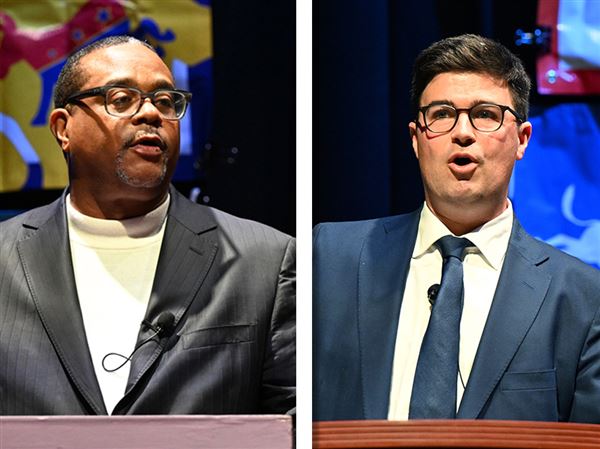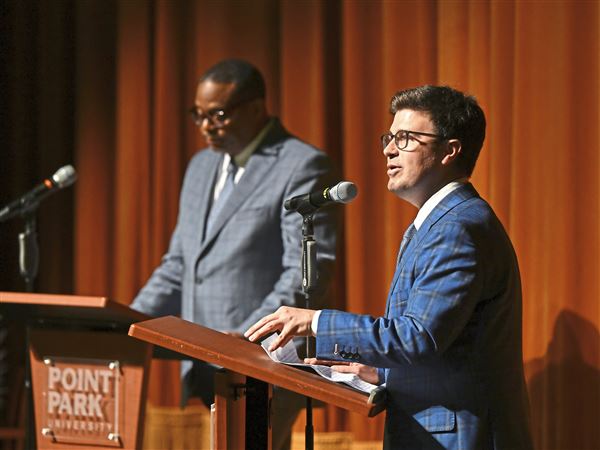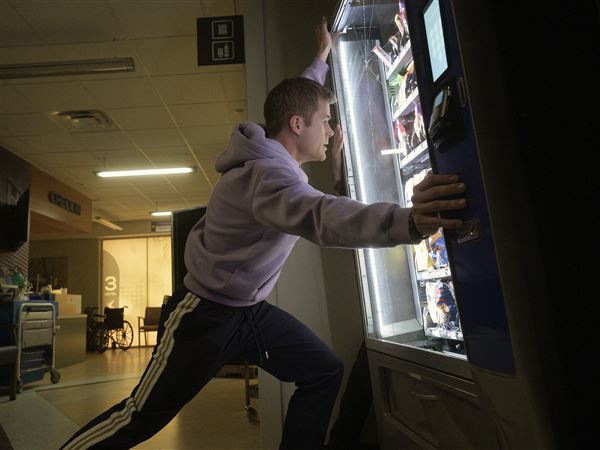Cameras that catch you running red lights.
Cameras that catch you speeding.
Cameras that catch you evading tolls. Or blowing past the gates at a railroad crossing. Or driving without insurance. Or on the lam after a kidnapping or bank robbery.
The technology exists for all of it, but Pennsylvania figures to stay in the slow lane of electronic traffic enforcement.
The Pennsylvania Turnpike uses cameras to nail toll dodgers, and Philadelphia has a pilot program of red light cameras, but the use of automated enforcement is unlikely to spread anytime soon.
Members of the state House Transportation Committee, who heard sellers of various technologies tout their wares at a hearing in Pittsburgh this week, said they expected the Legislature to be extremely cautious about authorizing such devices.
"I think the idea of using some of this technology strikes some trepidation in the public," said Rep. Joseph Markosek, D-Monroeville, the committee chairman.
"On the one hand, there's a feeling that some of this is necessary and can be very helpful, but on the other hand how much Big Brother do we need in our society?" he asked.
Philadelphia has had a pilot program of red light cameras since 2005. State law does not allow them elsewhere.
Rep. Paul Costa, D-Wilkins, has said he would like to try them at some dangerous intersections in Pittsburgh but will wait until Philadelphia's program is up for reauthorization in 2013 to try to amend the law.
At last week's hearing, four business representatives outlined an array of automated traffic policing devices including red light cameras.
Mark Etzbach, regional sales director of Redflex Traffic Systems, based in Phoenix, described automatic license plate recognition, a device that reads license plates in real time and can instantly alert authorities when it sees a stolen car, fleeing felon, parking scofflaw or Amber Alert suspect.
Another system takes photos of drivers who drive around gates at railroad crossings (or in the case he showed on video, the tractor-trailer that plowed right through the gate.)
Wayne Pettigrew of InsureNET described a system that cross-checks license plates against insurance databases to identify uninsured motorists.
The most widely used automated enforcement tool is the red light camera. More than 400 communities in 25 states and the District of Columbia have programs. Twelve states and the district also use speed cameras, according to the Insurance Institute for Highway Safety.
The red light systems rely on sensors in the pavement. When a motorist enters the intersection after the light turns red, a pole-mounted camera takes a picture of the driver's license plate and conveys it to the traffic enforcement office. A citation is mailed to the driver.
Adam Tuton, senior vice president for American Traffic Solutions, said the cameras "are about making roads safer," not raising revenue from fines. In most cases, prominent signs are posted warning motorists in advance about the cameras.
The Insurance Institute said red light cameras have been shown to reduce violations and intersection crashes, and that a "large majority" of the public supports them.
But some states and towns have outlawed them, and there have been complaints about their constitutionality. One problem is that most of the systems photograph the license plate but not the driver, leaving in doubt who committed the violation.
Rep. Rick Geist, R-Blair, minority chairman of the Transportation Committee, said any such device must be deployed for safety, not financial reasons.
"The first thing you want to do is to protect people's individual rights. The second order is safety," he said, adding that the possibility of any expansion of automated enforcement in Pennsylvania in an election year is nil.
Mr. Costa agreed, saying even a bill to authorize red light cameras on a trial basis in Pittsburgh would fail.
"As you know," he said, "we're a very conservative state."
First Published: March 6, 2010, 5:00 a.m.















